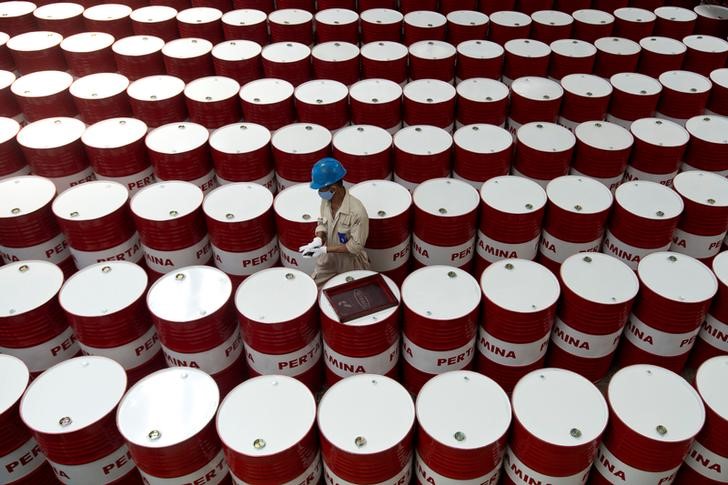Oil prices dip on mixed US inventories, weak China data
Oil prices fell in Asian trade on Thursday as investors digested data showing an unexpected increase in U.S. product inventories, while weak economic data from top importer China also weighed.
Crude prices were also pressured by strength in the dollar, as hawkish signals from the Federal Reserve ramped up bets that the central bank will cut interest rates at a substantially slower pace in 2025.
Brent oil futures expiring in March fell 0.5% to $75.79 a barrel, while West Texas Intermediate crude futures fell 0.5% to $72.30 a barrel by 20:49 ET (01:49 GMT). China inflation reads muted for December
Chinese consumer price index inflation remained languid in December, while producer price index inflation shrank for a 27th consecutive month, data showed on Thursday.
The reading pointed to limited improvement in China’s prolonged disinflationary trend, even as the government doled out its most aggressive round of stimulus measures yet through late-2024.
China is the world’s biggest oil importer, and has been a key source of anxiety for crude markets. Traders fear that weak economic growth in the country will eat into oil demand.
The country is also facing potential economic headwinds from the incoming Donald Trump administration in the U.S.
Trump has vowed to impose steep trade tariffs on Beijing. US oil product inventories rise sharply
U.S. gasoline and distillate inventories grew substantially more than expected in the week to January 3, government data showed on Wednesday.
Gasoline inventories grew 6.3 million barrels against expectations of 0.5 mb, while distillates grew 6.1 mb on expectations of 0.5 mb.
Overall crude inventories also shrank less than expected, at 0.96 mb, against expectations of 1.8 mb.
The build in product inventories marked an eighth straight week of outsized product builds, and spurred concerns that demand in the world’s biggest fuel consumer was cooling.
While cold weather in the country spurred some demand for heating, it also disrupted holiday travel in several areas.
Strength in the dollar also weighed on crude prices, as the greenback shot back up to more than two-year highs on hawkish signals from the Federal Reserve.
A strong dollar pressures oil demand by making crude more expensive for international buyers.
Source: Investing.com
